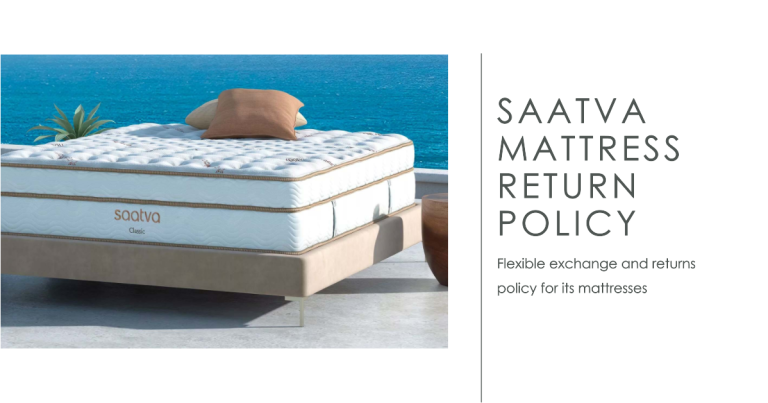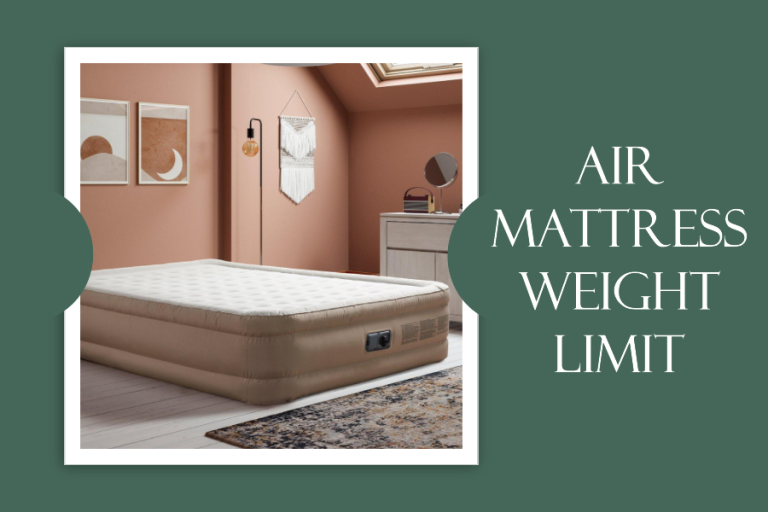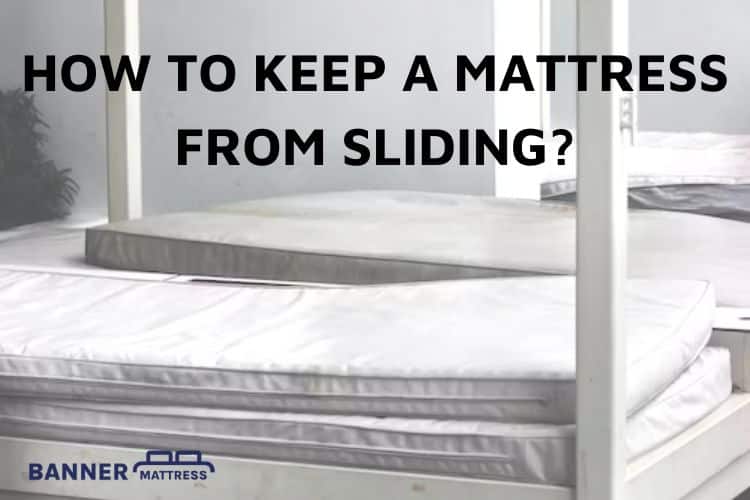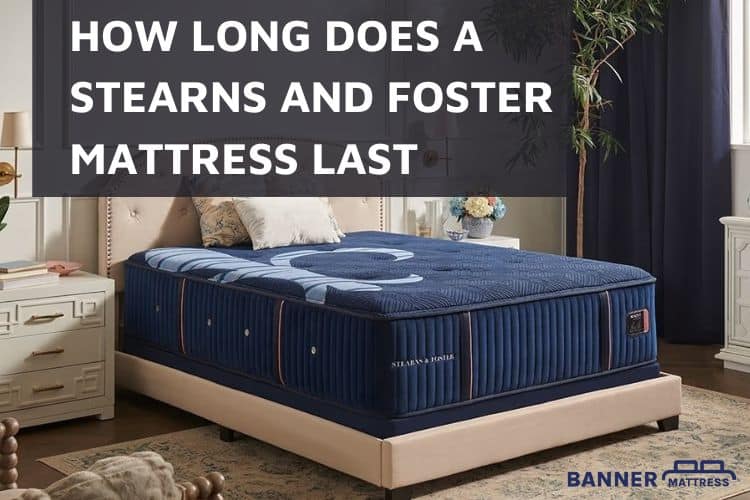Mattresses tend to lose their shapes and material quality over time, like anything you ever own. Meticulous cleaning and maintenance may slow down that process to a certain extent, but remember that their breakdowns are inevitable.
Thankfully, all hopes are not lost; this insightful article gladly delivers tips to tackle mattress sagging in the middle. Other relevant aspects and issues are also discussed in detail, ensuring the best possible bedding experience for you.
Why Does Mattress Usually Sag In The Middle?
Constant Sleeping Positions
This issue can occur anytime and anywhere – whether you enjoy your sleep with a partner, a pet, or alone. The balance and shape of your mattresses will change over time despite maintenance, but constant sleeping positions will speed up that process.
Here are some common sleeping poses that cause mattresses to sag:
- You lie down on only one side (on the left or right) every day.
- You toss and turn in just one position throughout the night. Certain mattress points are likely to slack as a result.
- Do you have other company on the bed (such as a cat or dog?)? Their constant resting positions might also be the culprit.
In most cases, the contact points between the beds and your hips or shoulders suffer the most from these sleeping poses, worsened by your overall body weight.
Lack of Adequate Support
When the cushion receives little to no support from the bed or the box spring, some areas will inevitably sag – particularly king-size and queen-size beds, which demand lots of support due to their heavy and large frames.
Do not hesitate to spend generous cash on premium, high-quality box springs, and beds. Also, if you spot any broken parts on the bed, fix them immediately to keep the mattresses from straining further.
Read more: Best Daybed Mattress
Natural Tear and Wear
All mattresses will wear out, regardless of spring, foam, or latex materials. They simply lose their solidity over long periods of time and frequent usage.
For instance, those sleeping on a traditional spring mattress for five years will eventually experience a lack of firmness in the materials, which leads to sinking.
Latex and foam frames are prone to compress due to prolonged use, molding the bed shape and resulting in eventual sags.
How Can You Fix Sagging Mattresses?
The tricks below are wonderful in helping you find your sleeping comfort on a dipping mattress.
However, remember that some of these suggestions are just stopgaps, and the sagging still remains on the bed. Once your budget is stable, consider purchasing replacements before the quality of your mattresses worsens.
Use Mattress Toppers
Purchasing mattress toppers help you rest much more comfortably on sinking mattresses. A mattress topper is meant to be put on the bed’s top, offering additional comfort layers besides the existing ones.
Most toppers can be bought as separate accessories, usually featuring 2-5 inches of feathers, down alternatives, down, wool, latex, or foams. The denser the materials are, the better they can counter saggy mattresses.
High-quality toppers are known for providing even sleeping surfaces – terrific for anyone who wishes to improve their bed comfort but has no financial capabilities to purchase new mattresses yet.
Though toppers cannot permanently fix the sagging, they are still a great temporary measure for enhancing your sleeping comfort.
Rotate Your Mattresses
Unless the manufacturer specifically warns you against doing so, most mattress models can be regularly rotated. Swapping the bed’s head and foot can add a significant amount to its lifespan and keep premature sagging at bay.
A general rule is to rotate it every 3-6 months. Even if the sagging has already been severe, turning the mattresses over can still reduce the damage to a certain extent.
Excessive sagging often occurs in places your body puts the most pressure on (ex: hips, backs, etc.). Hence, rotating the mattresses allows your body’s heavier parts to sink into areas that haven’t been dipping yet, balancing the sleeping surfaces.
Note: Be more cautious when your beds are of more modern versions. Mattresses like these enjoy one-sided designs (ex: Tempur-Pedic products); thus, flipping them causes increased damage risks and major discomfort.
So if you still decide to rotate them, consider seeking expert help or advice from the local shopper. Once you can get to do this, ask for a second pair of hands, since these products are not made for spinning and can be pretty heavy.
Replace The Mattress Foundation
The bed foundation contributes significantly to premature sagging issues in your mattresses. For instance, foundations with only five legs or below often slack the materials due to insufficient support at the mattress center.
Foundations based on slats also lead to saggy problems, especially in snug areas between all the slat supports. And we don’t need to elaborate on old-age foundations; their breakdowns over time are problematic for your mattresses’ quality.
Choosing the proper foundation is the key to survival here. A slew of factors can impact the outcomes, so do not forget to consult the mattress manufacturers for more tips and guidance on which styles you should use.
Several brands specify minimum allowable gaps between support slats, which may impact the warranty policies. Double-check them carefully!
Read more: Best Mattress Without Box Spring
Add More Pillows
Some people recommend using extra pillows on the mattresses’ sagging areas to temporarily counter the sagging.
Other users like sleeping with pillows below the backs, legs, or hips; pillows with great shape preservation are the best choice.
Placing these pillows under the mattresses (instead of below the sleeper’s body) also helps to prop the saggy areas much better. However, we do not favor this strategy since it prevents even support and accelerates the materials’ aging faster.
Inspect The Warranty Coverages
Sagging issues (or any other problems with the mattresses) means it’s time to check the manufacturer’s guarantee policies. For damages caused by covered reasons, you can easily ask the manufacturers to repair or even replace the products, saving an insane amount of money.
How To Prevent Sagging Problems for Your Mattresses?
Change How and Where You Sleep
Do you and your partner occupy each side of the huge bed? Or do you prefer scooping on the mattress’s middle every night? Whatever the answer is, it’s time to switch your current positions.
Try to alter where you decide to sleep every week. For example, people sleeping alone might set up extra pillows once in a while so that their body will lean to the left one week, the right in the next week, and the central area during the week after that.
How about couples that share beds? We suggest you switch sides weekly or every other day, enabling the body pressure to sink into different places on the mattress. Since your sleeping position keeps changing, the body pressure will reduce, slowing the aging process.
Keep rotating your sleep positions like this for several years, and you will realize how both your sleeping comfort and the mattress’s lifespan improve.
Use Box Springs
Many bed frames have started adopting box springs instead of slats. And that’s understandable, as slats don’t offer the same support level for the mattress as their box spring counterparts and cause the mattress bottom to sag even more due to a lack of proper foundation.
Some readers wonder whether that means every mattress calls for box springs. But we cannot deny that most beds will perform much better thanks to them.
When Should You Replace The Mattress?
It’s time to look for replacements if the mattress suffers from at least one of these issues:
- It’s already 6 to 8 years old (even more)
- It affects your sleep negatively
- Some saggy areas are beyond saving
- It makes more sounds than usual (common for old innerspring beds).
Read more: How Long Do Memory Foam Mattresses Last
Are New Mattresses Supposed to Sag At The Center?
New mattresses are not necessarily sagging in the early moments, but rather be like this, after a long time of use. However, there will be some unlucky chances that you have got poor-quality mattresses and experience sagging very soon.
Be careful about your bedding items because they cost way more than other products in the house. You should research and find out more information about your targeted products in order to avoid this situation.
But before jumping to the terrible conclusion that your money has been misspent on substandard mattresses, confirm whether you have mistaken the body impressions imprinted on the fabric with sagging.
Conclusion
What are the reasons behind your sleeping pad’s distorted shapes, and is there any tip to return them to normal?
Our article has addressed all these burning inquiries, lending tried-and-true methods that have been proven effective in numerous real-life cases. So apply them with utmost confidence, and do not hesitate to contact us if certain troubles persist.
We still suggest you buy new mattresses if your current duvets and cushions are too old (8 years or more). The tricks given above, while still effective, are only temporary in these cases, which means the sagging may return.
Here are some more tips to fix the issue for back pain relief:









